How do I keep cool when using a smart bike or trainer?
Over-heating can drastically diminish your ability on the bike, a common issue when training indoors
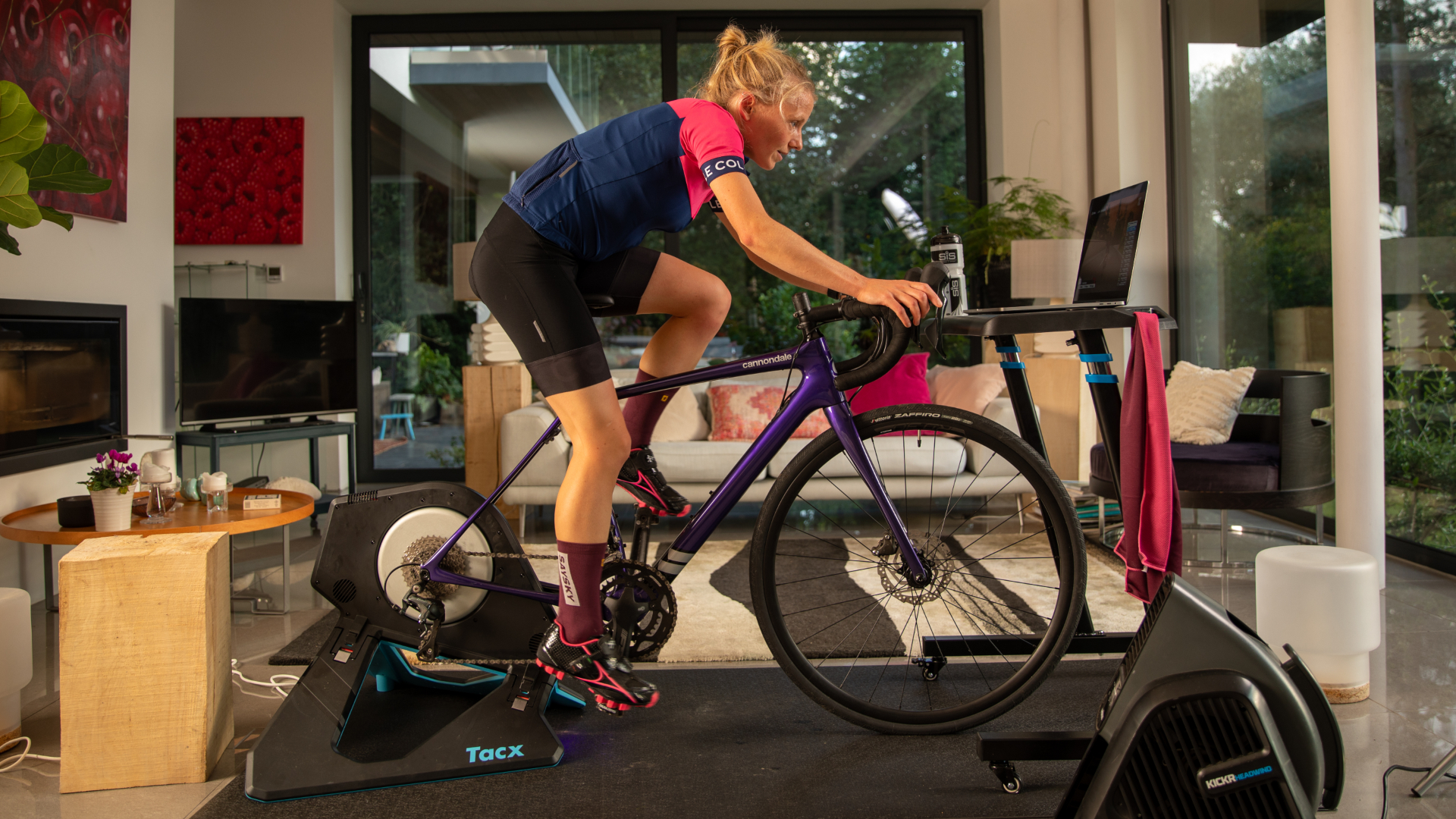
Indoor training is now a year-round part of our training, helping us stay in peak condition through the spring or summer, while perfectly complementing those longer rides during the late autumn and winter months.
Overheating can be an issue when riding indoors - even in winter - with no airflow to cool your skin. If your indoor setup is in a cold, drafty garage, then there’s less to worry about, but as more people move their setups indoors, using spare bedrooms or garden rooms, it’s worth keeping an eye on your body temperature, especially for those who compete in the virtual world.
“Exercise itself, air temperature, and humidity can increase your core body temperature, putting stress on your cardiovascular system,” Dr Lewis James of Loughborough University explained when interviewed for a previous article on overheating. “To help cool itself, your body sends more blood to the skin, leaving less available for your muscles, meaning your heart has to work harder.”
Then as your body sweats in order to cool itself down, dehydration can become another issue. This is less so over a quick 45-minute session, but if you’re in a virtual world for longer periods of time you'll need to pay attention to your hydration.
Here are some factors to consider - and associated kit - to help you to stay cool and get the most out of your indoor sessions.
Ventilation
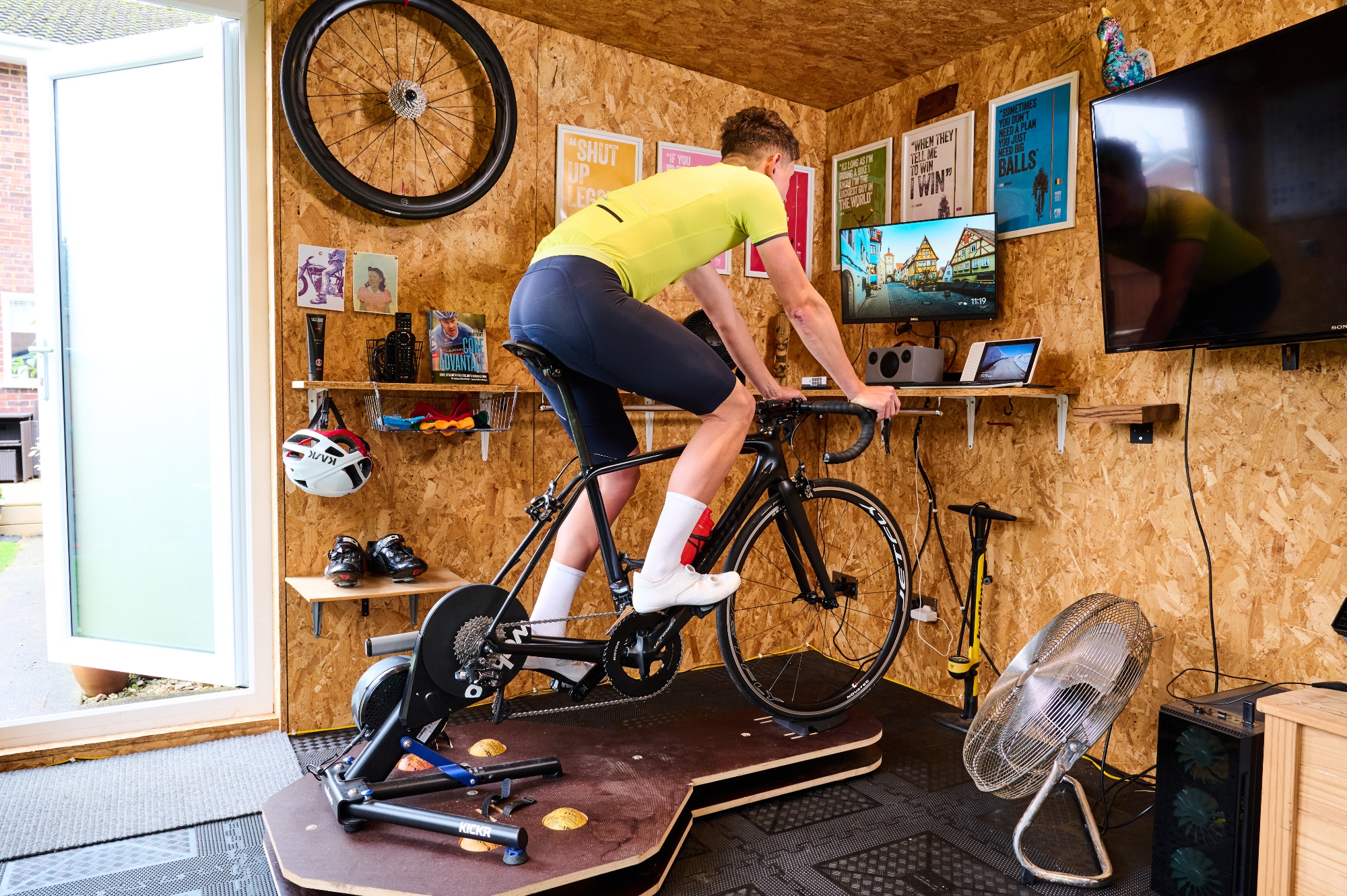
The combination of an open window or door and a fan helps to circulate the air
First, open a window. After that, you’ll want to keep the air circulating. If you don’t already have a fan it’s a worthwhile purchase. One of the most commonly purchased online is the compact Honeywell Turbo Fan, available from £20. First developed for drying paint, the Vacmaster Cardio54 (£99) has been repurposed for cyclists and includes a remote control to adjust power.
If money is no object, the Wahoo Kickr Headwind (around £230) connects to your smart turbo and adapts to your effort, blowing harder as you put in more effort.
The latest race content, interviews, features, reviews and expert buying guides, direct to your inbox!
Indoor clothing
With no air resistance, aero considerations are out the window when it comes to indoor kit, so instead clothing designers can optimise their clothing for wicking moisture away from the skin.
Most kit makers feature some indoor kit in their range, including Rapha whose loose-fitting women’s indoor shirts (around £45) wouldn’t look out of place in a spin class. Santini’s Super Lite indoor bib (£180) use extremely breathable fabric while the gel chamois is designed for longer turbo sessions where comfort can be an issue.
Sweat protection
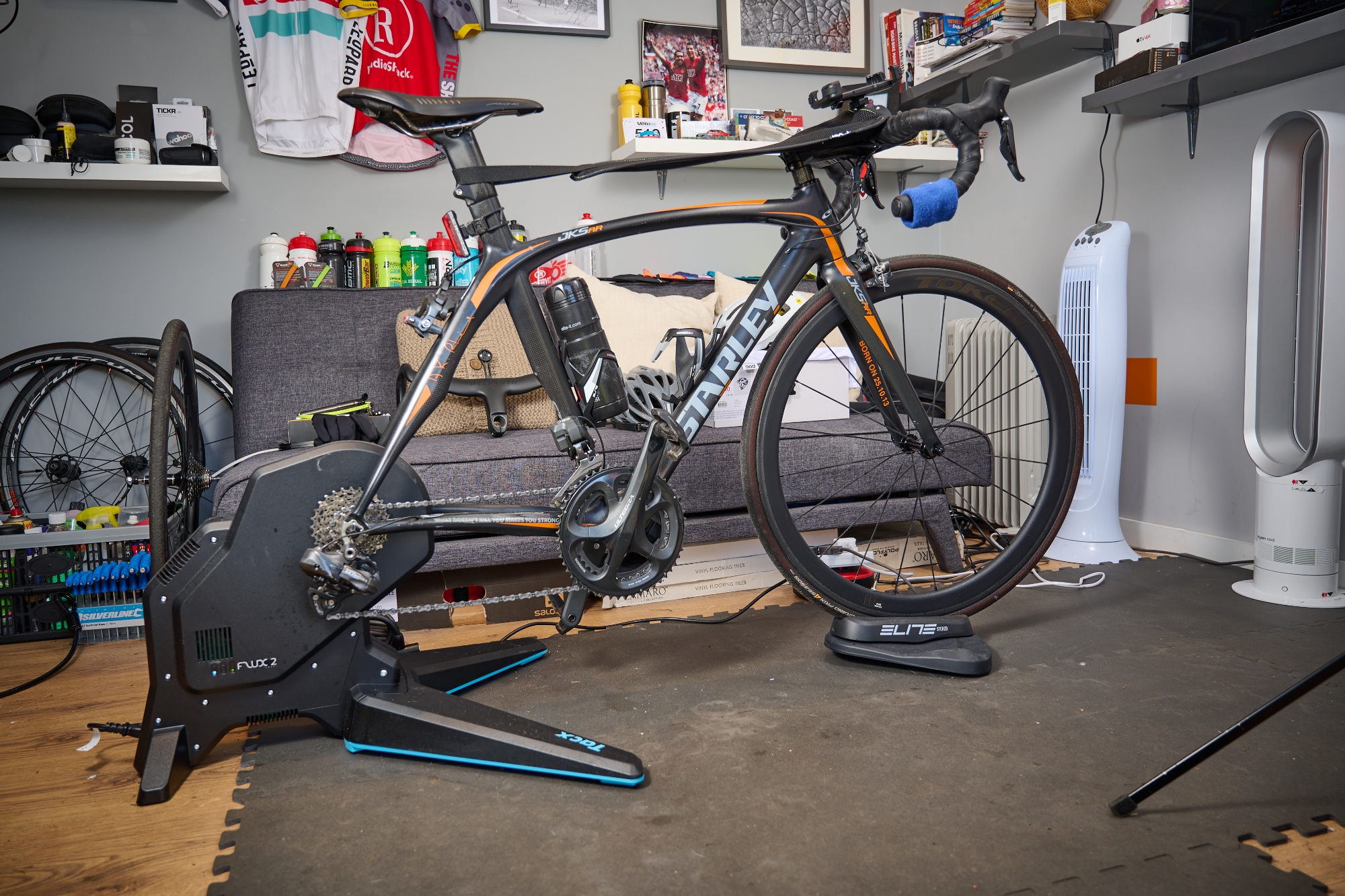
A mat really helps to protect the floor from sweat
Chances are when riding indoors you will sweat. A lot. One member of the CW team has destroyed three Wattbikes with his sweat, so if you use your best bike on the turbo, it’s worth protecting it, especially the bolts around the handlebar, stem, and headset. A towel draped over your bars will do, and doubles up as something to mop yourself with.
You might also want to protect your floor. A yoga mat will work, but there are some specific mats available that are thicker. The Vel Foldable packs away neatly and you’ll find Tacx, Elite and Wahoo mats online too (£25 - £80). Be sure to wipe everything down too.
Hydration
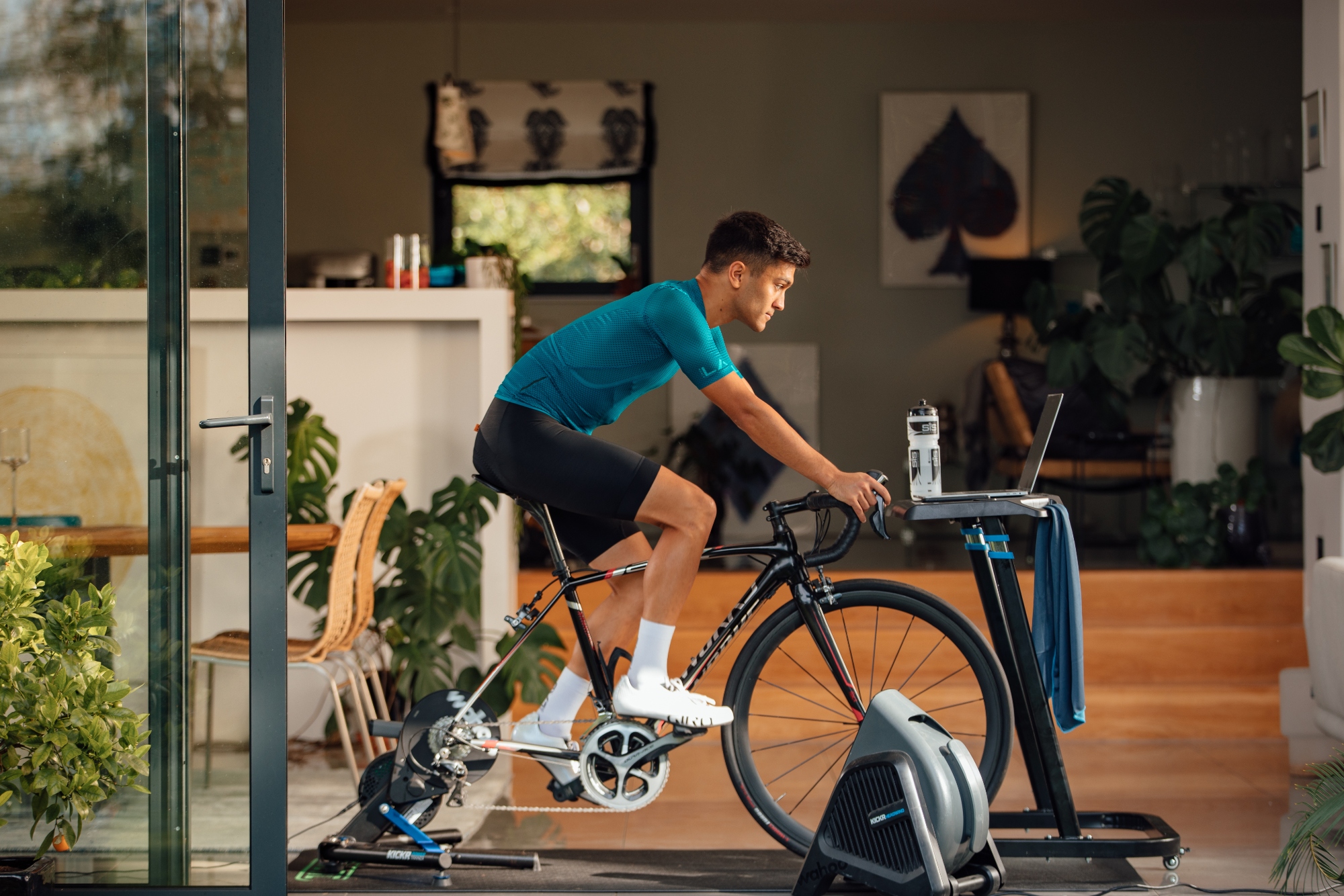
Keep a bottle close at hand to help you stay hydrated
You’ll need more liquids on the turbo than you do outside, and cooling it down can help with body temperature. Storing bottles in the freezer for an hour or two before your ride will do the trick, while insulated water bottles will keep your drink cooler for longer. Pro Bike Tools insulated bottles work well for turbo sessions (and then again in the summer). Just don’t hit your session with bottles of solid ice.
We say
If indoor training isn’t part of your riding, then it’s worth a try this winter. With training sessions galore available across multiple platforms as well as virtual worlds to ride in there’s enough to keep everyone motivated over 45 minutes or more. And we guarantee the extra fitness gained will mean you get more out of your winter club runs. Get your set-up dialed in and you’ll find you have fewer excuses to jump on the bike before or after work.
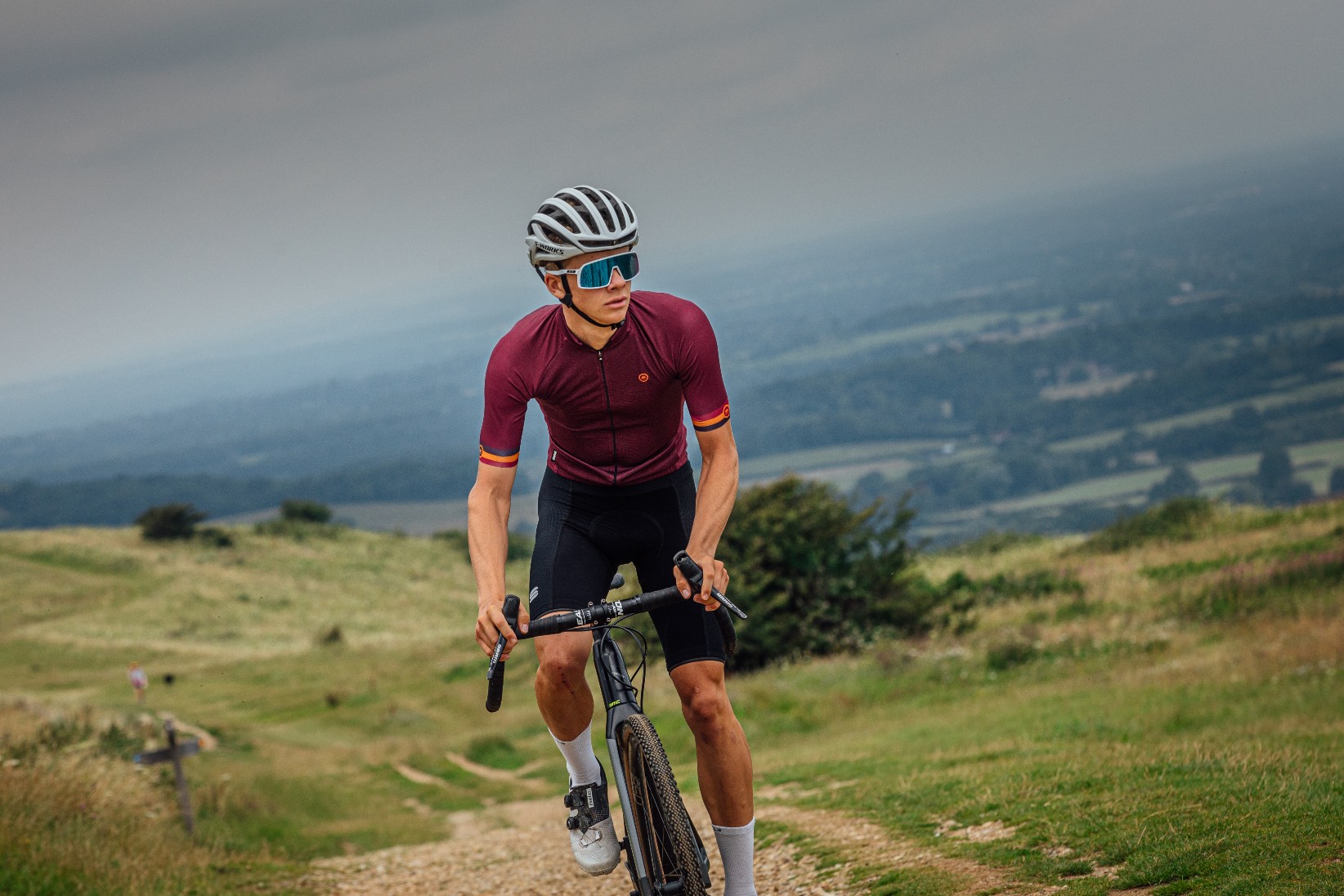
Joe is Cycling Weekly's former tech writer. He's always had a love for bikes, since first riding a two wheeled steed before the age of four. Years down the line, Joe began racing at 16, and enjoyed great experiences internationally, racing in Italy, Spain and Belgium to name a few locations. Always interested in tech, Joe even piloted his Frankenstein hill climb bike to a Junior National Title in 2018. After taking a step back from elite level racing in April 2022, Joe joined our team as a freelancer, before becoming Tech Writer in May 2023.

